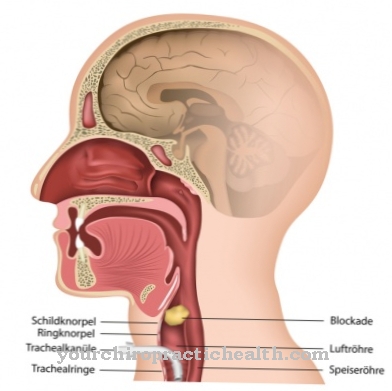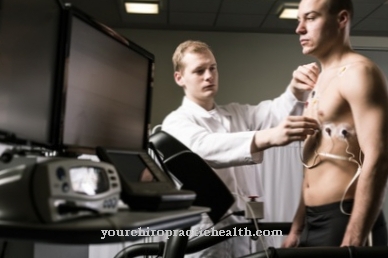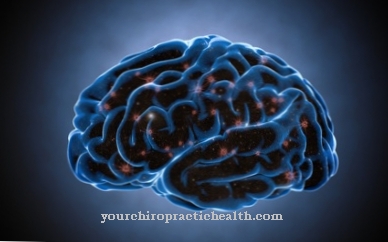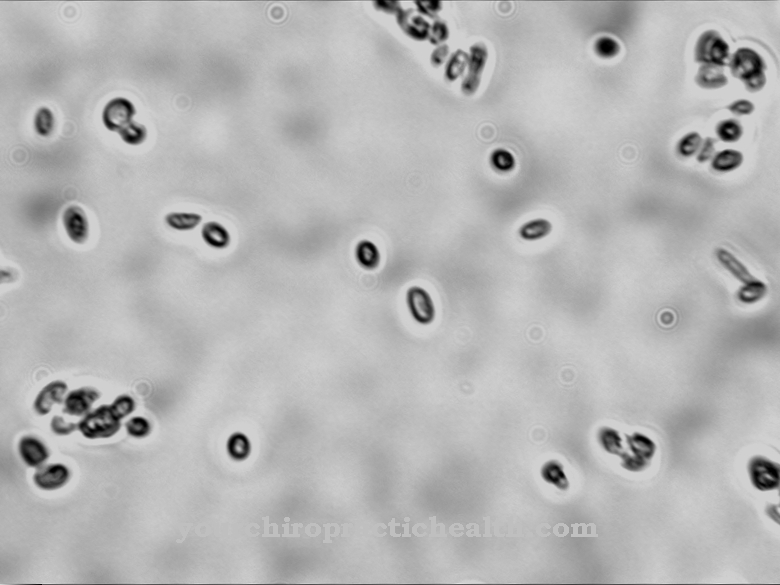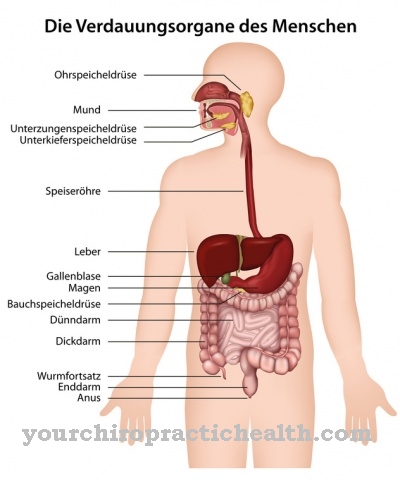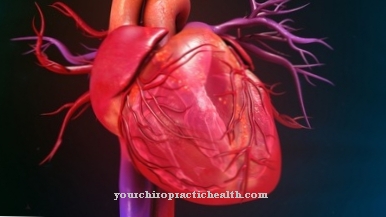The Magnetic resonance imaging is often called MR or MRI designated. Magnetic resonance tomography is a so-called imaging procedure in medicine.
What is magnetic resonance imaging?

This means that using the Magnetic resonance imaging Image data can be collected on body structures or organs. Since the physical principles of magnetic resonance tomography are based on those of so-called nuclear magnetic resonance, the name of magnetic resonance tomography is occasionally used Magnetic resonance imaging.
The way magnetic resonance imaging works is based on magnetic fields, which in turn excite various atomic nuclei in the body of living beings. This excitation is then used by magnetic resonance tomography to collect data. The collection of image data is made possible, among other things, by the different properties and compositions of different types of tissue.
Image contrasts can thus be achieved with magnetic resonance tomography. The technique of magnetic resonance tomography was developed in the 1970s.
Function, effect & goals
The Magnetic resonance imaging especially in the field of medical diagnostics, i.e. when diagnosing functional disorders or diseases. With magnetic resonance tomography, for example, it is possible to generate so-called slice images or slice images.
Body structures or organs can be viewed in digital "slices" using images. This possibility of magnetic resonance tomography makes it possible to determine changes in the tissue of a living being. Different methods can be used depending on the field of application of magnetic resonance imaging. For example, in addition to creating layer images, it is also possible to depict processes in the body on film.
In this way, for example, the blood flow or the function of organs such as the heart can be displayed. This form of magnetic resonance imaging is also known as real-time MRI. Real-time MRI is also used when the function of joints in motion is to be assessed.
If the aim of diagnostics for a patient is to take a closer look at the patient's vascular system with the aid of magnetic resonance tomography, the method of magnetic resonance angiography (MRA) is suitable, for example. With its help, blood vessels such as veins or arteries can be displayed. With this form of magnetic resonance tomography, the use of MRI contrast media is occasionally used, with the help of which some representations become more clearly possible.
As a rule, three-dimensional image data are collected in the MRA. Functional magnetic resonance tomography (also known as fMRI or fMRI) is suitable for visualizing structures of the brain. With this form of magnetic resonance tomography it is possible, among other things, to view activated areas of the brain with a pronounced spatial resolution. If the tissue blood flow is the focus of diagnostic considerations in a patient, then perfusion MRT can be used, for example.
If nerve fiber connections are to be reconstructed virtually, the use of a form of magnetic resonance tomography called diffusion imaging is finally suitable. With this method, movements of water molecules in the body can be shown spatially. The background to this is that, for example, in some diseases of the central nervous system, the movements of these molecules turn out to be changed.
Side effects & dangers
The Magnetic resonance imaging works without the creation of physically stressful radiation such as X-rays or other ionizing radiation. In cases where what is known as a contrast agent is used as part of magnetic resonance imaging, this agent can cause various side effects.
Contrast media is used in magnetic resonance tomography in order to be able to show different physical structures more clearly. In some patients, contrast media can cause allergies or intolerance. However, such an allergy is quite rare. Symptoms of intolerance to contrast media used in magnetic resonance imaging include headaches or nausea.
Magnetic resonance imaging can harbor risks, for example, in patients who have metal in or on their bodies. For example, metal fragments in the body can change their position under the influence of magnetic resonance imaging, which can endanger body structures. The use of magnetic resonance tomography is also restricted in people who wear a pacemaker. Because cardiac pacemakers can be destroyed by the effects of the magnetic forces that are released in the course of magnetic resonance imaging.
During the implementation of a magnetic resonance tomography there is a high level of background noise due to the large magnetic forces, which some patients find unpleasant. In addition, the small diameter of the examination tube, which is used in magnetic resonance imaging, can occasionally cause feelings of oppression or claustrophobia.


